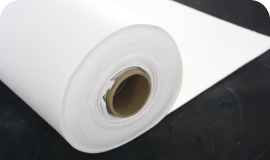Energy Saving for Buildings
IBIH is committed to developing new aerogel products for buildings. Utilizing aerogel technology, IBIH provides comprehensive energy-saving solutions for buildings, reducing energy loss and improving living comfort.
Comprehensive solution for energy saving in buildings
In 2018, the total carbon emissions for the whole process of national buildings was 4.93 billion tons, which was the highest, accounting for 51.3% of national carbon emissions. Faced with the increasingly serious problem of climate change, countries around the world have reduced greenhouse gases(GHG) by means of a global agreements. Achieving carbon peaking and carbon neutralization is a key task in China. Currently, from classical buildings to modern high-rise buildings, fireproofing, energy conservation, and space are the three basic needs for architects and owners. Heavy conventional thermal insulation materials can improve energy efficiency, but will also inevitably sacrifice space, which may affect the integrity of the building, and reduce the living standard or reduce the investment income of the owner.
Energy efficiency
The conductivity of aerogel is very low, which helps to keep the indoor temperature stable and comfortable, thus reducing the overall energy consumption.
Increasing indoor space
Aerogel thermal insulation building materials have a lighter and thinner structure and can effectively reduce the thickness of the thermal insulation layer and increase the indoor space of new buildings. In addition, they can also be used to reduce the damage done when repairing ancient buildings.
Mildew reduction
Aerogel is a long-term hydrophobic material, which can effectively prevent mildew from spreading and endangering residents' health.
Supporting Products
Aerogel insulation blanket
Kistler® KSL8 high temperature resistant composite thermal insulation felt series products are made of nanoporous silica aerogel, glass fiber, ceramic fiber, mullite fiber and other inorganic fibers through special process, which have both low thermal conductivity and high temperature resistance advantages.
Aerogel glass
IBIH aerogel glass is composed of tempered glass filled with aerogel particles, in which the aerogel particles are silica aerogel specially produced for aerogel glass. This product features high light transmittance, high thermal insulation, and high structural strength. Aerogel glass can convert natural light into diffuse light to prevent glare, while also maintaining indoor temperatures.
Aerogel mortar
The thermal conductivity of aerogel high heat resistance mortar reaches 0.028W/m.K. Its thermal insulation effect is 2~3 times higher than that of traditional thermal insulation mortar, and it is the first thermally insulating mortar in the world, using aerogel as the aggregate. After the dry mortar material is evenly mixed with water it can be directly sprayed on brick masonry.
Aerogel thermal insulation decorative integrated board
The aerogel thermal insulation decorative integrated board has a sandwich structure composed of aerogel and decorative panel, which features aerogel’s superior thermal insulation performance and easy, dust-free installation. Its thickness and decorative surface can be customized to meet the requirements of customers.
News Dynamics
Developing aerogel for a more sustainable, low-carbon future
TELL:
010-88504660







